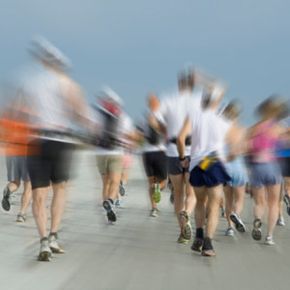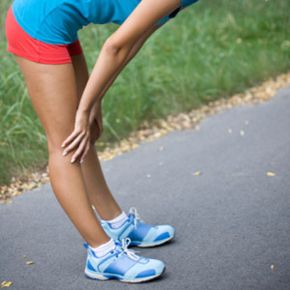Call it a pain, a cramp, a poke in the gut or, simply, a side stitch -- however you describe it, most runners will know what you're referring to because they've experienced it themselves. While it's unpleasant, a side stitch is not an injury. A side stitch is simply a feeling of discomfort on the left or right side of your abdomen, slightly below the rib cage. Think of it as an internal cramp. The cramp or spasm is actually occurring in your diaphragm -- the muscle that separates your upper torso from your lower torso and assists in breathing.
It's the up and down movement of your diaphragm and internal organs that creates the spasm. Any activity that involves consistent jumping and jostling can lead to side stitches. But because running, by its very nature, produces constant jouncing, it is the sport most often associated with the temporary side pain.
Advertisement
Because of its sudden onset and intensity, a side stitch can be alarming. But there's no need to be concerned if you understand what's happening and how to fix it. It is quite common and treatable [source: The Stretching Institute]. With adjustments in your running stride, breathing pattern, and even choice of terrain, you can make the stitch go away quicker. Additionally, if you make modifications in your pre-run eating patterns and warm-up routine while steadily improving your cardiovascular fitness, you'll get side stitches less frequently. Bottom line? Whether you're a novice jogger or an elite runner, we can help ensure that this unwelcome guest doesn't visit often and never stays for long.




